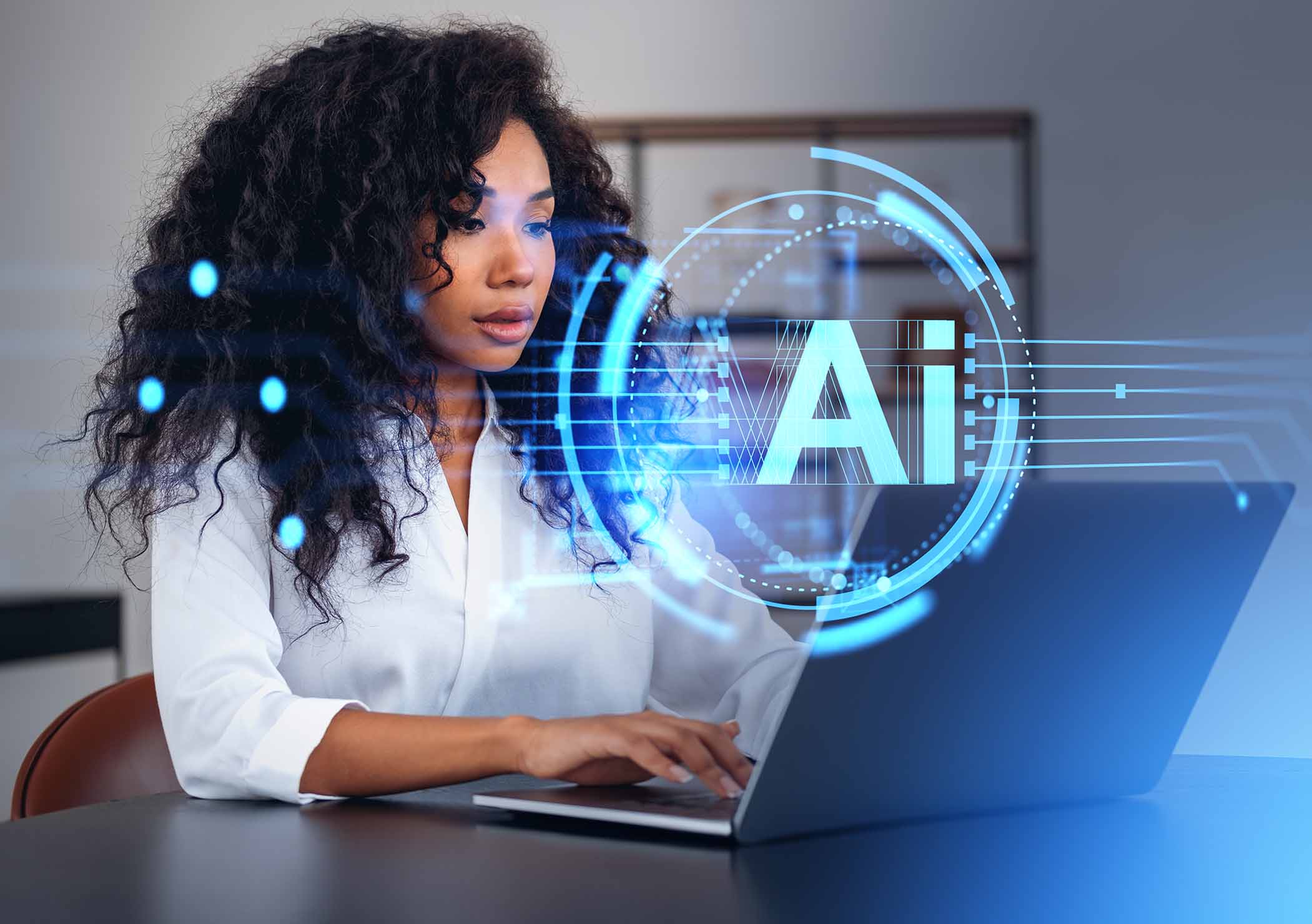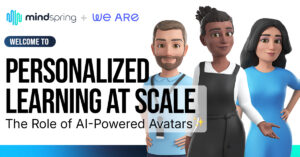
Balancing Human Touch with AI in Learning Experiences
The integration of Artificial Intelligence (AI) in Learning Management Systems (LMS) and learning strategies is changing how organizations train and develop their workforce in the Learning and Development (L&D) space. Striking the right balance between the human touch and AI in learning is key. AI boosts efficiency and personalization, but it should enhance, not replace, the human element. This balance is crucial for creating engaging, effective learning experiences. By leveraging technology, organizations can enrich L&D without overshadowing its human aspects.
The Rise of AI in Learning and Development
AI has revolutionized many areas within businesses, and L&D is no exception. From adaptive learning systems to intelligent coaching platforms, AI offers a myriad of tools that can tailor learning experiences to individual needs, track progress, and provide real-time feedback.
For example, AI-driven platforms can analyze employee performance data and suggest personalized learning paths that align with their roles and career goals. They can do this through collecting data from various sources like skills assessments and behavioral metrics and analyzing it to identify skill gaps, strengths, and areas for improvement. Based on the analysis, AI can give personalized recommendations for learning modules, courses, or activities that are tailored to the employee’s unique needs and aspirations. As the employee’s progress through their learning paths, AI continuously monitors their performance and engagement, adjusting recommendations to ensure ongoing relevance and effectiveness. This approach can not only accelerate skill acquisition, but also increases engagement by making learning more relevant and accessible.
AI can also automate administrative tasks, such as scheduling, content curation, and initial assessments. This allows L&D professionals to focus on more strategic activities. Virtual assistants and chatbots can provide on-demand support, helping employees find resources and answer questions, thereby enhancing the learning experience beyond traditional training.
Chatbots are even integrated into e-learning platforms to provide instant support and feedback. They can answer common questions, guide learners through modules, and simulate conversations to practice language skills. This 24/7 support ensures learners receive timely assistance, making the learning experience more seamless.
The Human Touch: An Indispensable Element
Despite the significant capabilities of AI, the human touch in learning remains vital in learning and development. L&D professionals bring empathy, creativity, and the ability to inspire and motivate learners—qualities that AI currently lacks. The nuances of human interaction, such as understanding body language, emotional intelligence, and fostering a supportive environment, are irreplaceable by technology.
Leaders play a crucial role in developing critical thinking and problem-solving skills through interactive discussions, collaborative projects, and real-world simulations. These experiences help employees apply new knowledge and skills in practical settings, which is essential for effective learning and development.
The human touch is also vital for addressing the emotional and psychological aspects of learning. Building relationships, providing mentorship, and offering personalized support are core elements that rely on human interaction. A knowledgeable, empathetic trainer or coach can significantly boost an employee’s motivation, confidence, and development.
Learning science supports these human-centric elements by emphasizing the importance of social learning and emotional engagement in the learning process. Research shows that learners are more likely to retain information and develop skills when they are emotionally invested and socially connected.
Achieving the Balance
Balancing AI with the human touch in learning involves leveraging the strengths and limitations of both. Here are some strategies to achieve this balance:
Integrate AI Thoughtfully: AI should augment, not replace, the role of L&D professionals. For example, AI can provide personalized learning recommendations and handle routine tasks, while trainers and leaders focus on facilitating deeper learning experiences and providing human support.
Focus on Training L&D Professionals: Equip L&D professionals with the skills to effectively utilize AI tools. Training programs should focus on how to integrate AI into learning strategies, enabling them to leverage technology to enhance their efforts.
Maintain Human-Centered Learning: Prioritize activities that foster human interaction, collaboration, and critical thinking. This ensures that learning experiences are holistic and that employees develop both technical skills and soft skills.
Foster a Supportive Learning Environment: Create an environment where employees feel supported and valued. L&D professionals should be available to address the emotional and social needs of learners, offering guidance and mentorship that AI cannot provide.
Ethical Considerations: The use of AI in L&D raises ethical concerns, such as data privacy and potential bias. Implement AI systems that are transparent, fair, and respect employee privacy. L&D professionals should advocate for responsible AI use within their organizations.
Learning Science: AI doesn’t yet utilize the principles found within learning science. This is a key differentiator for MindSpring and worth highlighting. By combining AI’s capabilities with the established principles of learning science, MindSpring ensures that learning experiences are both technologically advanced and scientifically sound.
The Future of Learning and Development
As AI continues to advance, its role in L&D will undoubtedly grow. However, the human touch will remain an indispensable element of effective learning and development. By thoughtfully integrating AI with traditional L&D methods, organizations can create enriched learning experiences that cater to individual needs while fostering the essential human qualities that are crucial for personal and professional growth.
Balancing the human touch with AI in L&D requires a careful and considered approach. By leveraging the strengths of AI and preserving the unique qualities that L&D professionals bring, organizations can create a more effective, personalized, and human-centered learning experience for their workforce. The future of L&D lies in the harmonious integration of technology and human interaction, ensuring that employees receive the best of both worlds.
Take the first step towards this future by exploring how our solutions can help your organization seamlessly integrate AI with human-centered learning and development. Contact us today to learn more.


